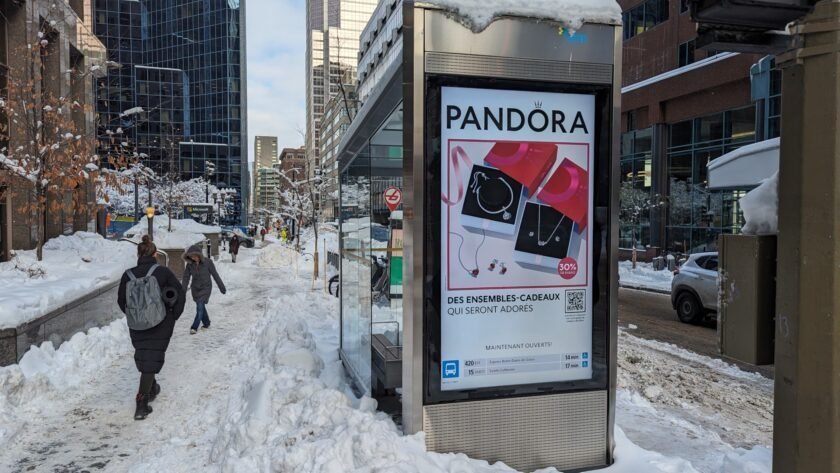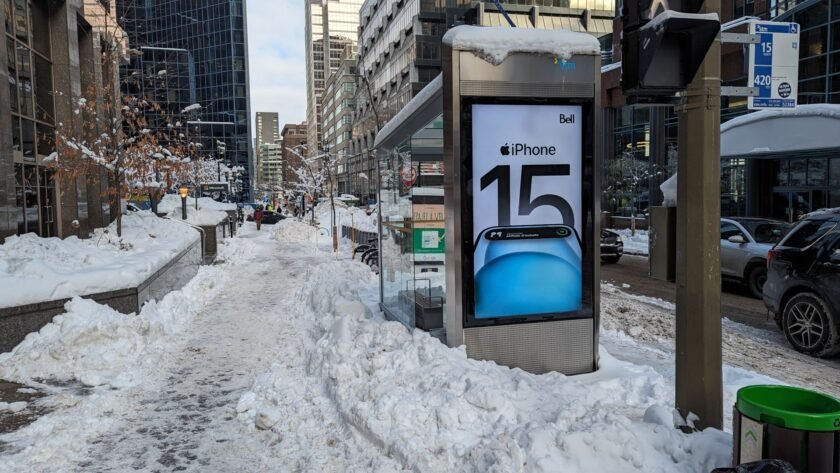Montreal | Public transportation riders want to be informed about live departure times. Usually this is done with small LCD, LED or sometimes even ePaper displays integrated into the transit shelters. In addition many shelters also include DooH-screens for advertising. The city of Montreal combined both use-case into one screen – a disruptive approach with many benefits.
Business critical information such as live departure data at transit shelter have become standard in most inner cities around the world. Users expect live departure times to be clearly visible available in the waiting area. For public transport operators, digital touchpoints are a considerable invest – because historically transit shelters are quite basic street furniture – often not even electrified, let alone illuminated or connected to the internet. Public transport operators rely on energy-saving displays (often not illuminated) with a radio connection, alternatively single-line LED matrix displays.
Out-of-home to the rescue
In large cities and communities, JCDecaux, Ströer and Co come to the rescue with modern street furniture that is not only illuminated but often also equipped with DooH screens. The OoH media owner even take care of the service and cleaning – in return for this, the public sector grants outdoor advertising rights. The world’s largest outdoor advertiser, JCDecaux, is considered the inventor of the street furniture vs advertising rights business model since the 1970s.


DooH screens are not only attention-grabbing, but also provide passengers with an illuminated, safe waiting place in the dark. But one feature is still missing today – the live display of departure times. This is usually outsourced to a separate displays installed and operated by public transport operators. In times of sustainability and cost pressure in the public sector, it is a question of whether an additional digital signage infrastructure is necessary and still fits into today’s time.
Joint approach in Montreal
In Montreal, Canada, the city and the OoH media owner Quebecor joined forces many years ago. More than 140 transit shelters are fitted with only one large DooH-Screen and live departure times are regularly displayed at the bottom of the screen. Creative agencies develop DooH-artwork with the temporary overlay in mind.
At first glance, this is a disadvantage for DooH media owner, because the screen has to be temporarily shared with bus information at the bottom. At second glance, shared use also has a big advantage: transit riders waiting for the next bus are looking at the DooH screen even more often. The visibility (opportunity to see) and the duration increases immensely compared to the classic, separate display setup. DooH screens also offer an additional benefit and thus increased acceptance. An interesting and innovative approach to how OoH can turn from plain advertising into important public infrastructure.


